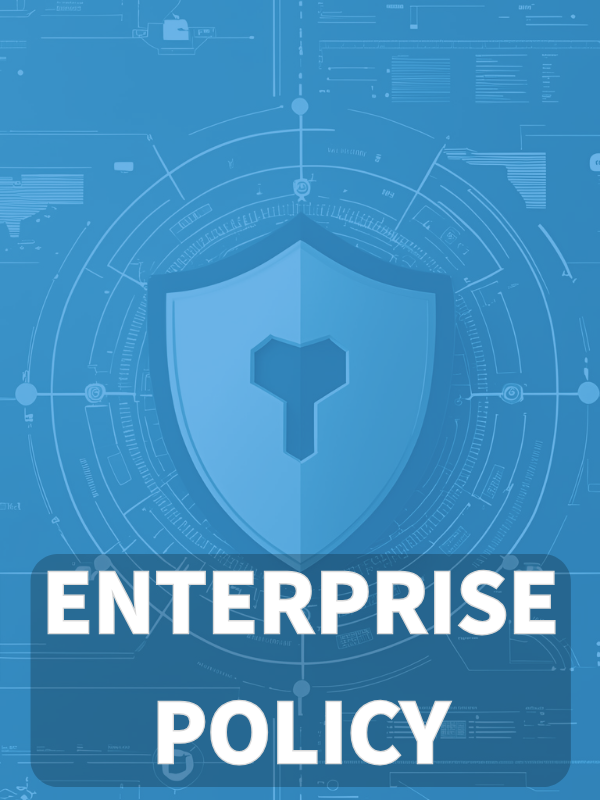Overview
The Remote Work Policy establishes mandatory requirements for secure, compliant remote access and data handling by all organization staff, ensuring robust controls for devices, authentication, monitoring, and regulatory compliance across all remote environments.
Comprehensive Remote Security
Ensures confidentiality, integrity, and availability of organizational data for remote personnel and contractors.
Strict Access & Device Controls
Mandates VPN, MFA, endpoint hardening, and asset registration for all remote connections.
Broad Applicability
Covers employees, vendors, service providers, and temporary staff engaged in remote work.
Compliance-First Approach
Aligns with ISO/IEC 27001, GDPR, NIS2, DORA, and industry standards for regulatory assurance.
Read Full Overview
Policy Diagram

Click diagram to view full size
What's Inside
Scope and Rules of Engagement
Eligibility, Authorization, and Role Duties
BYOD and Device Management Requirements
Encryption and Secure Connectivity
Monitoring, Logging, and Incident Handling
Third-Party and Vendor Remote Compliance
Framework Compliance
🛡️ Supported Standards & Frameworks
This product is aligned with the following compliance frameworks, with detailed clause and control mappings.
| Framework | Covered Clauses / Controls |
|---|---|
| ISO/IEC 27001:2022 | |
| ISO/IEC 27002:2022 | |
| NIST SP 800-53 Rev.5 | |
| EU GDPR |
Article 32Article 5(1)(f)Recital 39
|
| EU NIS2 | |
| EU DORA | |
| COBIT 2019 |
Related Policies
Information Security Policy
Establishes the baseline for secure handling of assets, applicable to all work environments including remote.
Acceptable Use Policy
Governs appropriate use of organizational devices and systems during remote work sessions.
Access Control Policy
Ensures that remote access privileges follow least privilege and proper authentication mechanisms.
Risk Management Policy
Defines how remote work risks are identified, treated, and monitored within the ISMS.
Asset Management Policy
Requires inventory and configuration management for all devices used remotely.
Logging And Monitoring Policy
Ensures that remote sessions are monitored, audited, and retained per compliance requirements.
Data Retention And Disposal Policy
Defines data handling rules relevant to remote work, including removable media and device disposal.
About Clarysec Policies - Remote work policy
Effective security governance requires more than just words; it demands clarity, accountability, and a structure that scales with your organization. Generic templates often fail, creating ambiguity with long paragraphs and undefined roles. This policy is engineered to be the operational backbone of your security program. We assign responsibilities to the specific roles found in a modern enterprise, including the CISO, IT Security, and relevant committees, ensuring clear accountability. Every requirement is a uniquely numbered clause (e.g., 5.1.1, 5.1.2). This atomic structure makes the policy easy to implement, audit against specific controls, and safely customize without affecting document integrity, transforming it from a static document into a dynamic, actionable framework.
Full Lifecycle Enforcement
Defines monitoring, incident handling, training, and audit controls for remote work, including versioning and annual review.
Robust Data Handling and Device Rules
Enforces encryption, prohibits unauthorized printing or sharing, and mandates rapid device wipe/loss response procedures.
Exception & Emergency Management
Provides clear, risk-based controls for policy exceptions, temporary remote access, and business continuity events.
Frequently Asked Questions
Built for Leaders, By Leaders
This policy was authored by a security leader with 25+ years of experience deploying and auditing ISMS frameworks for global enterprises. It's designed not just to be a document, but a defensible framework that stands up to auditor scrutiny.
